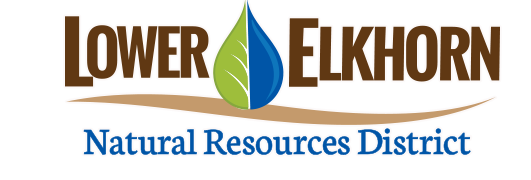Nitrate levels in Nebraska’s groundwater are on the rise, especially in portions of Northeast Nebraska. The Lower Elkhorn Natural Resources District (LENRD) has analyzed the nitrate data gathered as part of the routine Groundwater Quality Sampling Program and have found some troubling trends across their 15-county district.
An evaluation of water quality data collected over the past 40 years reveals that nitrate concentrations are continuing to increase in some areas. Most recently, the data indicates elevated concentrations of nitrates in portions of Cuming, Colfax, and Dodge Counties, reaching levels that could pose health threats to humans and the environment.
“Nitrate in the water is relevant to all of us,” said Mike Sousek, LENRD General Manager. “This is our water. The water we drink and use in our homes every day. The water we recreate with, grow our crops with, and plant and grow our lawns and gardens with. But, this same water, could be affecting our health if it’s not properly managed.”
While the most serious threat from excessive groundwater nitrate is to human health, environmental issues such as harmful algae blooms in lakes are caused or exacerbated by excessive nitrate loads in Nebraska’s waters. Nitrate is often found in surface water, like rivers and lakes, but it also readily travels into groundwater supplies, meaning that no source of drinking water is safe from potential nitrate contamination.
The Safe Drinking Water Act requires that nitrate concentration in drinking water does not exceed 10 milligrams per liter. This threshold has been established to prevent methemoglobinemia in infants, however, researchers working with the University of Nebraska Medical Center have published studies indicating that prolonged exposure to drinking water containing nitrate levels at or below the threshold of 10 milligrams per liter is associated with increased risks of thyroid disease, central nervous system birth defects, and colorectal, bladder, ovarian, and kidney cancers, and therefore the threshold does not account for these other health effects.
To date, no studies have attempted to quantify the health and economic impacts due to nitrate in drinking water in the U.S. However, a recent study has presented a “first-of-its-kind” comprehensive assessment of nitrate exposure from drinking water. The study found that up to $1.5 and $6.5 billion in medical and indirect costs may be associated with annual nitrate-attributable cancer cases.
With the growing body of science alluding to the notion that the current drinking water nitrate standard may not be providing sufficient protection to public health, the discovery of areas with elevated groundwater nitrates within the LENRD becomes even more concerning.
Adding to those concerns are the economic costs of installation, operation, and maintenance of treatment systems that remove nitrate from drinking water supplies. Safe drinking water requirements put a financial strain on smaller municipalities and rural water treatment plants who are dealing with source water that is contaminated with unsafe concentrations of nitrates, resulting in higher operation costs that inevitably get passed on to the customers.
For example, Creighton became the first community in Nebraska to build a reverse osmosis plant constructed to treat nitrate and provide safe drinking water to its residents. In 1993, the cost of the original plant, excluding engineering and equipment, was $605,507. An additional $1.2 million has since been invested to rehabilitate the plant and the operation and maintenance costs over the past 5 years have been over $1.8 million. The increased costs to keep the system running have driven up the cost to the consumer to over $60 per month.
The community of Osmond, Nebraska recently completed construction of two new wells and other improvements, investments that were required as the existing wells were failing to meet the needs of its residents due to excessive nitrates. It’s a circumstance that annually repeats itself in communities all across Nebraska as water utilities struggle to provide quality water to their customers at affordable rates. For example, the communities of Dodge and Plainview are both looking for quality groundwater sources outside of their city limits. To pump water from these wells, up to 5 miles from town, the additional costs for the system will be approximately $2-3 million for each community.
Other states are not immune, in October of 2017, Hiawatha, Kansas, began building a new water treatment plant that included an ion exchange system. Nitrate levels in Hiawatha had hit 11 ppm a few months before – it was one of several times the town has warned residents not to drink tap water. The plant cost the town of about 3,300 an estimated $3.5 million, which does not include the operations and maintenance costs.
For a private well owner, installing a reverse osmosis system in their home is often the quickest and easiest solution for the high nitrates in their well water. The average monthly cost when using a basic system is around $35 per month. When multiplied for each of the 23 years since the establishment of the first groundwater-quality management area, some families have invested almost $10,000 to have clean, safe drinking water in their homes. A worthwhile investment to protect the health of their families, but a drag on the personal finances of those who are impacted. A recent study in northeastern Nebraska has revealed that nearly 82% of wells were at risk of exceeding the 10 mg/L of nitrate. The cost of remediation for domestic wells through reverse osmosis treatment in this area average from $4 - $164 total regional cost per household per year, depending on the threshold for treatment. The study estimates that with the current trends, over the course of 20 years, residents in northeast Nebraska could see remediation costs as high as $400,000 - $5,400,000 based on an estimate of $13 - $508 per total number of households per year. Ion exchange and distillation were the next most cost-effective options. Nontreatment options include building a new well or purchasing bottled water, both of which are more expensive in the long run than using treatments. Reverse osmosis treatment was the most expensive option, due to high initial costs and operation and maintenance costs of the system. These high costs may discourage some households and communities from pursuing treatment, leading to possible health impacts due to nitrate exposure.
A better solution is to keep nitrates from reaching Nebraska’s water in the first place. A host of agricultural practices – like the use of cover crops, no-till or conservation tillage, and rotational livestock grazing – can help farmers improve their soil health and decrease applications of chemical fertilizers, which are the source of much of the nitrate in our water. Practices that achieve that goal can also help farmers increase their bottom line.
The grim reality of the situation is that it is not a “one size fits all” scenario when dealing with different land uses, soil type, or availability of labor and equipment resources from one farm to the next. However, what every producer can do is to take advantage of the environmental nitrogen sources that are readily available on their land, such as, residual soil nitrogen, irrigation water, legume credits, and organic matter. Comprehensive management of these available credits make it possible to make reductions to their purchased nitrogen applications, saving time and money, all while maintaining yields.
The UNL recommendations for applying Nitrogen fertilizer is a ratio of 1 to 1: 1 lb. of N per 1 bushel of corn. In some areas, producers can get by with much less, even as low as 60-70% of the recommended amounts. This equates to big savings for the producer and less opportunity for Nitrogen to leach into the groundwater.
Sousek said, “There are producers in our district who are trying innovative technology to improve nitrogen-use efficiencies that are allowing them to increase yields, all while decreasing inputs and lessening the chances for the leaching of nitrogen. We encourage everyone to bring ideas and discussions to the table. We’re here to partner with you.”
Sousek continued, “Producers are putting forth their best effort to minimize contamination, but we’re still not seeing the nitrate levels drop. This suggests there are problems that have not yet been revealed, and it highlights the need for increased monitoring and creative solutions to address water quality, public health, and the financial burdens associated with these problems.”
He added, “This water is ours to manage locally and share efficiently. Join us for our Open House Public Hearing and please share your ideas to help sustain and protect our natural resources.”
Open House Public Hearing
Thursday, March 25 | 5-7 p.m.
Nielsen Center in West Point, Nebraska












